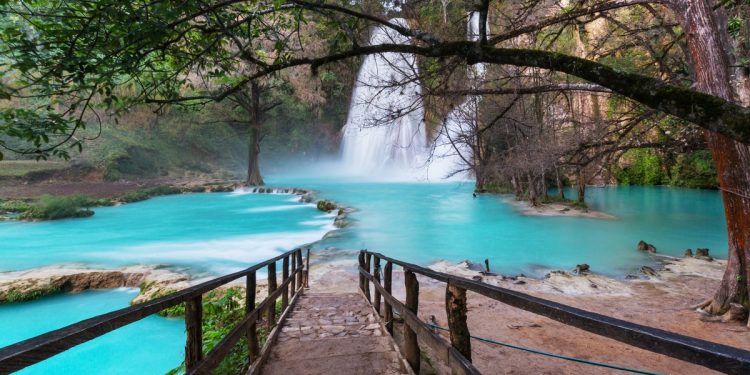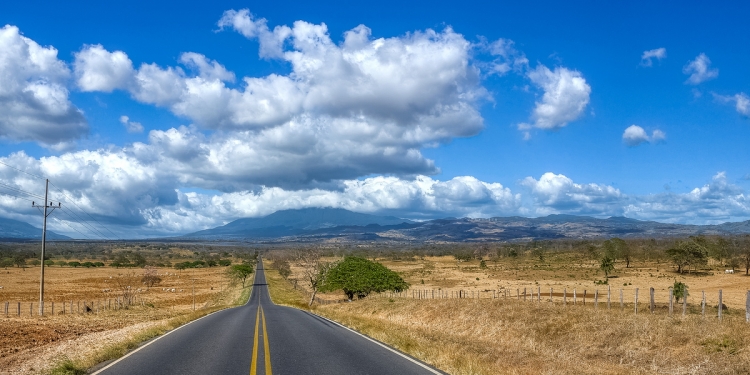Mexico’s weather varies significantly by season and by region.
The weather and climates in Mexico are affected by a combination of the season, what part of Mexico you are in, and what the elevation is there. This guide explains Mexico’s climates and weather by season and region and contains links to relevant articles about Mexico’s climates.
Climate and weather by location
For detailed climate information and typical weather patterns for specific places, look up the locations you want to visit using our extensive Mexico Travel Guide
See Also: When To Go Mexico (Seasons & Climate)
Mexico weather and climates Summary
Coasts: Hot and humid; can be subject to hurricanes during hurricane season (see below for details).
Climates inland at elevation
Warm, Spring-like year round, although it can become cooler during December thru March.
The hottest months in Mexico
The hottest months are April & May in the South, and July to September on Pacific Coast (Including Baja), and extremely hot in the Yucatan May to September. Also read about the dry season, below.
The coolest months in Mexico
Vary by region, but generally December, January, February; the Yucatan can still experience hot weather even in the coolest months.
Rain season in Mexico
Mexico’s rainy season runs (generally) from May/June to October (sometimes extends to November) each year. Most regions south of the Tropic of Cancer (near Mazatlán) are affected. Rain storms usually arrive in the late afternoon accompanied by thunder and lightning, creating torrential downpours before passing and leaving the evenings dry and cooled off.
See also: Mexico’s Rain Season
Dry season in Mexico
When the season rains finish in the late fall the cycle begins to unveil a significant change as the moisture evaporates from the ground and the air becomes noticeably drier. Learn more about the dry season in Mexico.
Hurricane season in Mexico
June, July, August, September, October (sometimes extends into November): Can affect weather on the Yucatan Peninsula, (e.g. Cancun), as well as weather on Mexico’s Pacific coast, from Baja California southwards, and as well climates along Mexico’s Gulf coast.
See also: Hurricane Season in Mexico
Detailed weather charts for Mexico
The BBC has launched detailed weather charts for Mexico, including satellite images, temperatures, pressure maps and forecasts for 32 cities across the country.
See: BBC Weather (Mexico)
When to go to Mexico
Our detailed guide, When To Go To Mexico explains more about Mexico’s seasons, climates and terrains.
See Also: Autumn Climates, Winter Climates, Spring Climates
Climates by Region in Mexico
How regions and elevation influence the climate in Mexico
See Mexico: A Land of Three Lands for detailed information about how region and elevation affect the climate across Mexico.
Northern Mexico
Northern Mexico is a desert region that features hot and dry weather, although cooler months can experience temperatures that drop to freezing overnight. Away from coastal areas, the weather in Mexico’s northern states in low-lying areas is hot and dry, and in elevated areas (like Monterrey) the climate is mostly temperate, but can get cool or even cold during the winter months.
Central Mexico
Inland central Mexico will be warm or hot (and dry) during the day, although evenings can get cool, so pack a pull-over that you can use during the early mornings and after sundown, when the difference in extremes of temperature can be felt quite acutely, especially during the winter months.
Southern Mexico
In Mexico’s southern regions (including Mexico City), the climate will be similar to that in central Mexico, but remember to keep in mind that elevated areas (including most of the colonial cities in this region) will be cooler and more temperate. The climate gets distinctly hotter and more humid as you travel deeper into the south / southeast and the Yucatan Peninsula, and when you descend from the highland cities towards the coasts.
Yucatan Peninsula
Hot and humid, especially June thru August. During these months, expect the days to be blisteringly hot, with monsoon-like downpours of rain in the early evening (they usually pass within a short time and leave the night dry and cooler). Hurricane season (June-October, sometimes extends into November) usually brings wetter weather and makes weather forecasting less accurate. The high season in this part of Mexico is December through May as these are the months with the most temperate and driest weather.
Baja California Peninsula
The stretch of land immediately south of California, USA, is Baja California (‘Baja‘ means ‘Lower’), and the weather here can be divided into two distinct categories: hot deserts inland and cooler near the oceans. Rainy days are rare outside of the brief ‘rainy season’ that typically runs from August through to early October, although summer is hurricane season which can bring torrential rains and tropical storms to the region.
Mexico in your inbox
Our free newsletter about Mexico brings you a monthly round-up of recently published stories and opportunities, as well as gems from our archives.




